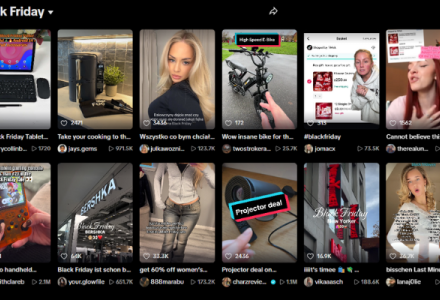Amazon’s DSP and The depreciation of the Third Party Cookie
The depreciation of the third-party cookie
Tech giants Apple and Microsoft sent shockwaves through the digital marketing industry with updates to their privacy policies which have banned third-party cookies from their browsers and operating systems. Google is set to ban them from Chrome in 2022, spelling the end to third-party cookies entirely.
Third-party cookies and device identifiers are tools that allow advertisers to follow users across a large number of websites, mobile phone apps and across devices. Advertisers can use them to gain insight on a person's online activities, potentially across unrelated websites and devices.
Using data gained via some price comparison sites, advertisers can further enrich their profiles with other highly personal data points and can trade this data to build profiles across multiple advertising platforms. Advertisers can then use these profiles to target potential customers with highly personalised ads, using data that consumers would often be unaware they have shared.
Whilst customers lose control of their personal data, a study by Adobe released earlier this year found that 60% of personalisation use cases depend on third-party cookies. If a user opts out of this tracking, app providers lose the ability to track them across platforms, and subsequently, deliver them tailored ads.
A Win for Walled Gardens
These changes have been fuelled by an increase in consumers seeking more control over their data, corresponding government regulations, and data privacy laws worldwide. The latest change restricts the use of third-party cookies. This makes it increasingly difficult for advertisers to create unified user profiles for customised targeting.
Companies like Google, Facebook, and Amazon however, can continue to identify users across websites and devices using first-party cookies and their authentication technologies. This allows them to create Walled Gardens, where only they have access to the data, profiles and interests of their users.
Amazon and First-party data
Amazon is becoming more relevant for brands because of its first-party shopper data and in particular is set to benefit from advertising budgets as a result. The Amazon shopper data enables audiences to be targeted based on real and known behaviours on the Amazon retail platform. Amazon stands to emerge from the privacy changes in an especially strong position from an advertising point of view.
Achieving growth with Amazon’s DSP
The main way for brands to take advantage of Amazon’s vast array of first party data is through their Demand-Side Platform (DSP). The Amazon DSP offers one of the most impactful opportunities for advertisers to scale in the post-third-party-data world.
When starting out with DSP, the first step for a brand is to define their goals. As mentioned, DSP offers one of the most impactful opportunities for businesses to advertise on scale, whether it will be for brand awareness, brand building, brand retention, or all.
Each brand will have a slightly different approach depending on their goals. At Tambo, when it comes to strategy, we refer to the four main pillars of marketing which are Awareness (focusing on lifestyle audiences), Consideration (consumers actively searching for products), Purchase (re-engaging with consumers who viewed but not purchased) and loyalty (repeat purchasers).
For Budget splits, there isn't a one size fits all approach as each brand will have different goals. If a brand is looking to launch a full funnel approach, a good starting point would be 10% Awareness, 45% Consideration, 35% Purchase and 10% Loyalty. Throughout the quarters, budget allocations will change dependent on seasonality. For example, during Black Friday you may stop Awareness and funnel the 10% to Purchase to re-engage with consumers who clicked but did not purchase with a deal, or, you may feel that you want to increase the percentage of budget in awareness as it aids your reach goals.
Creative on DSP
Once objectives and budgets have been defined, the next step is to look at creatives. Through Amazon DSP, there are a variety of different creatives a business can use. However, in terms of where it fits within the funnel, we have provided a guideline based on how we think they should be positioned in the funnel from Tambo learnings.
Image ads (Awareness): Image ads are great for businesses as they have creative control on how they would like their ad to display and especially if they are looking to promote a new product to their range. Whilst they look great, businesses must ensure that they adhere to guidelines. These guidelines include ensuring text is 9pt, that the font stands out against the colour, that prices are matched to landing pages, that there are clear calls to action and that claims are backed by reliable, independent sources. More on this can be found here.
Video Ads: (Consideration) These are a great way to showcase the unique selling points of products to consumers who are in-market. The recommended time for a video ad is between 15–30 seconds. More information on specifications and recommendations can be found here.
Dynamic E-commerce ads (Purchase & Loyalty): Businesses who don’t have access to a designer to create image ads or video ads would opt for Dynamic E-commerce ads. To build these ads, businesses will require an ASIN list only.
The main advantages are that the DEA ad will automatically update to reflect any price changes as well as star ratings which is why at Tambo, we see DEA ads at the bottom of the funnel.
The main disadvantages will be that you will need to meet the minimum reviews (15+) and ratings (3.5+) for your ad to display these specific features. In addition to this, the ad won’t look as professional compared to an image ad.
Whilst the above information on creatives is an initial guideline based on Tambo’s learnings, it is important that every business should test and learn as they may find that different creatives work better for them based on their goals. For example:
If image and video ads are not are not available, test using Dynamic E-commerce throughout the whole funnel and measure the impact through the various reports at your disposal.
Looking at other creative ads which won’t be available on the console such as Audio Ads which will help aid upper funnel activity (awareness and consideration). Information on creative guidelines can be found here



